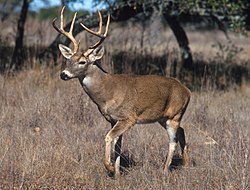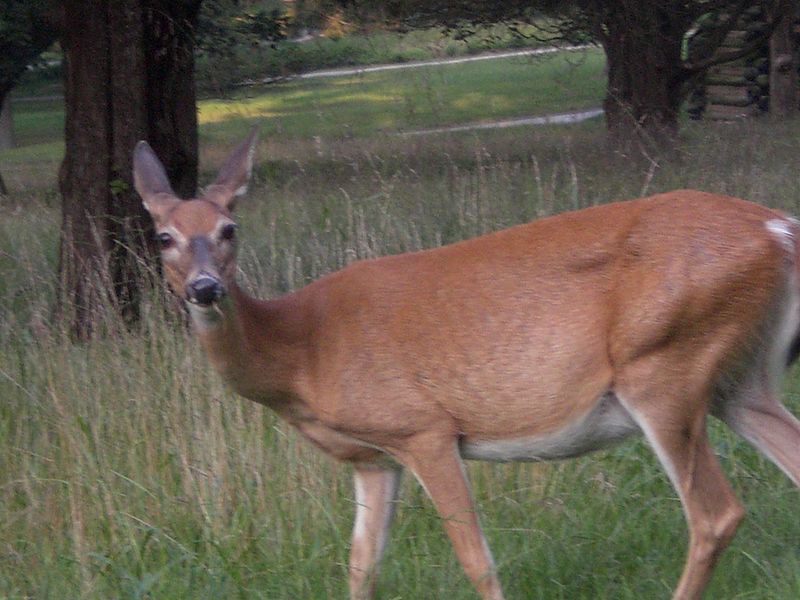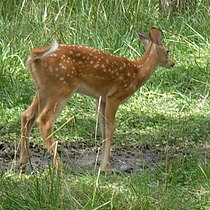The white-tailed deer (Odocoileus virginianus), also known as the whitetail or Virginia deer, is a medium-sized deer native to the United
States, Canada, Mexico, Central America, and South America as far south as Peru and Bolivia. It has also been introduced to New Zealand, Cuba,
Jamaica, Hispaniola, Puerto Rico, the Bahamas, the Lesser Antilles, and some countries in Europe, such as Finland, the Czech Republic, Romania
and Serbia. In the Americas, it is the most widely distributed wild ungulate.
Behavior
Males compete for the opportunity of breeding females. Sparring among males determines a dominance hierarchy. Bucks attempt to copulate with as
many females as possible, losing physical condition, since they rarely eat or rest during the rut. The general geographical trend is for the
rut to be shorter in duration at increased latitude. Many factors determine how intense the "rutting season" will be; air temperature is
a major one. Any time the temperature rises above 40 °F (4 °C), the males do much less traveling looking for females, else they will be
subject to overheating or dehydrating. Another factor for the strength in rutting activity is competition. If numerous males are in a
particular area, then they compete more for the females. If fewer males or more females are present, then the selection process will not need
to be as competitive.
Distribution
It is found in different types of forests in the Americas, from the Canadians, in the subarctic region through the dry forests of the
mountainous slopes of Mexico, the tropical rainforests of Central and South America, to the dry equatorial forests of northern Peru. and other
South American forested areas.
Diet
The white-tailed deer is ruminant and herbivorous. Search among the vegetation to consume leaves, buds, fruits and seeds, as well as mushrooms;
One reason for their ability to adapt to different forest habitats is the diversity of plant materials from which they can feed.







